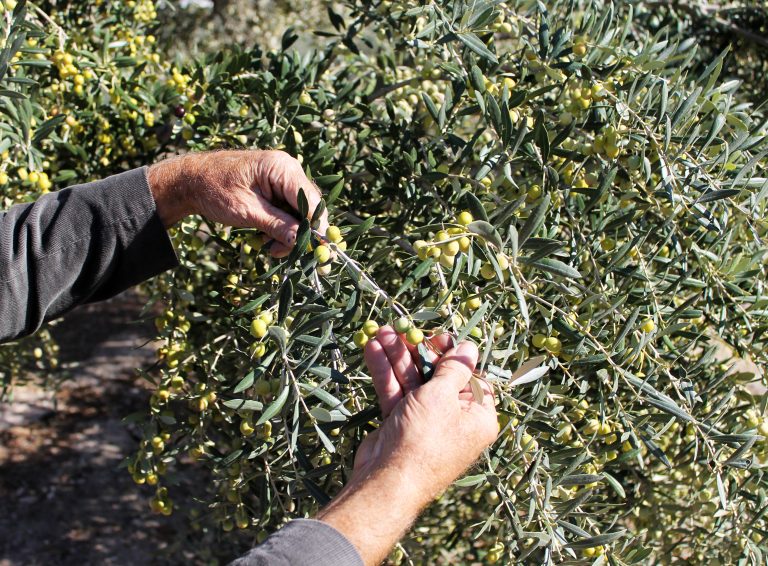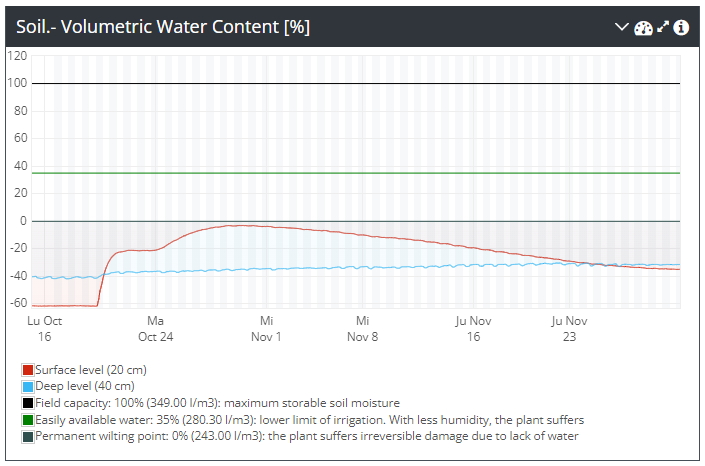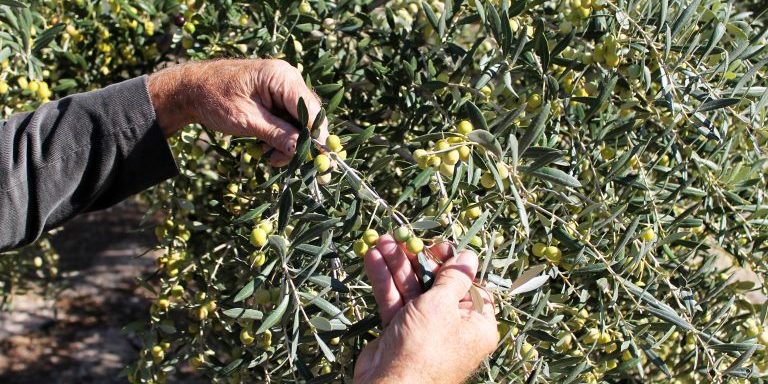 Every month, we analyze the evolution of the dryland farms of the GEN4OLIVES project, located in Estepa. In addition to evaluating with technical criteria how the crop evolves and the indicators that we monitor, we have observed that the abundant rains of the second half of October have provided greater humidity to the soil, as we will detail, and that this availability of water has lasted until the end November.
Every month, we analyze the evolution of the dryland farms of the GEN4OLIVES project, located in Estepa. In addition to evaluating with technical criteria how the crop evolves and the indicators that we monitor, we have observed that the abundant rains of the second half of October have provided greater humidity to the soil, as we will detail, and that this availability of water has lasted until the end November.
However, the evolution of prices has influenced the extension of the campaign or the delay in harvesting.
The evolution of olive oil prices at origin in 2023 has been notable. Olive oil for the consumer has become more expensive by an average of 107% from January 2022 to September 2023, according to FACUA-Consumers in Action. It is important to highlight that the price at origin of olive oil is the bulk price at which oil mills and cooperatives sell their production. This price is established in kilograms and tons, not in liters, because it is more reliable to measure the amount of oil by its mass than by volume.
Throughout 2023, the price of AOVE at origin has remained relatively stable during the first months of the year, awaiting harvest expectations for the 2023-2024 campaign. At the beginning of October, the price did not go below €8.50/kg, and in November, it seems that due to the flexibility shown by the oil mills to close contracts for extra virgin oils, the new prices are around €8.00/kg. kg.
Ultimately, the increase in prices is due to the delay in harvesting the olives due to their low yield, and because, due to the increase in kilos caused by the rains in October and those expected in December, some dryland producers will endure everything possible to increase those kilos of oil.
Sources from the Oleoestepa cooperative consulted by Agropopular (a radio program in Spain that addresses agricultural, climatic and political issues relevant to the rural community) have detailed that the recent increase in prices has been due to the fact that the olive harvest is being delayed. due to its poor performance. Source: “The price of olive oil is riding the roller coaster”
 We present the Soil Moisture Graphs of an olive farm from the Manzanilla oil mill. The graphs show that humidity has remained low, clearly indicating water stress. However, greater availability is recorded in November compared to early October, with more than 62 liters per cubic meter on the days of highest availability and 28 liters per cubic meter on the lowest.
We present the Soil Moisture Graphs of an olive farm from the Manzanilla oil mill. The graphs show that humidity has remained low, clearly indicating water stress. However, greater availability is recorded in November compared to early October, with more than 62 liters per cubic meter on the days of highest availability and 28 liters per cubic meter on the lowest.
Next, we present the evolution in October and November of the NDVI indicator in one of the monitored farms in Estepa.

Monitoring the Normalized Difference Vegetation Index (NDVI) on the farms in Estepa, Seville, offers valuable perspectives on the behavior of vegetation in the period from the beginning of October to the end of November. During this period, a notable growth is observed in NDVI measurements, indicating a significant change in the health and density of the vegetation.
The increase of 52%, from an initial value of 0.214 to reaching 0.325, underlines the positive impact of rain and subsequent clear days to obtain a good cloud-free photograph. This substantial growth in NDVI not only highlights the positive response of vegetation to meteorological conditions, but also suggests an overall improvement in the productivity and quality of the plant environment.


